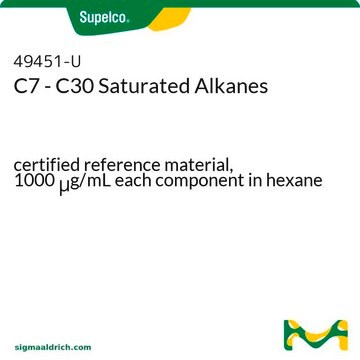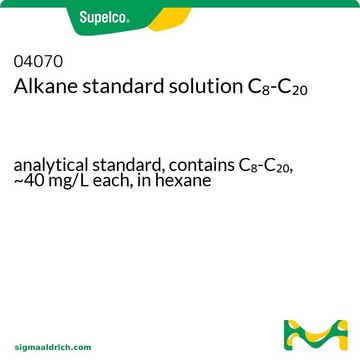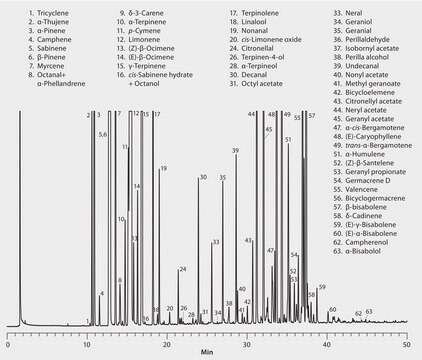40147-U
C8-C40 Alkanes Calibration Standard
in dichloromethane (varied)
About This Item
Recommended Products
CofA
current certificate can be downloaded
Quality Level
packaging
pkg of 1 mL
concentration
in dichloromethane (varied)
technique(s)
HPLC: suitable
gas chromatography (GC): suitable
application(s)
petroleum
format
multi-component solution
storage temp.
2-8°C
Application
Other Notes
Analyte
signalword
Warning
hcodes
Hazard Classifications
Carc. 2 - Eye Irrit. 2 - Skin Irrit. 2 - STOT RE 2 - STOT SE 3
target_organs
Central nervous system, Peripheral nervous system,Central nervous system,Cardio-vascular system,Eyes
Storage Class
6.1D - Non-combustible acute toxic Cat.3 / toxic hazardous materials or hazardous materials causing chronic effects
wgk_germany
WGK 2
flash_point_f
Not applicable
flash_point_c
Not applicable
Choose from one of the most recent versions:
Already Own This Product?
Find documentation for the products that you have recently purchased in the Document Library.
Customers Also Viewed
Our team of scientists has experience in all areas of research including Life Science, Material Science, Chemical Synthesis, Chromatography, Analytical and many others.
Contact Technical Service












